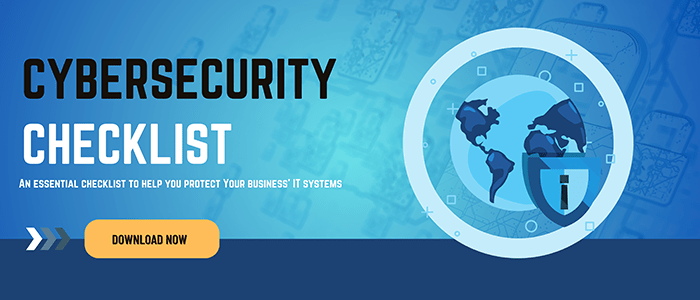Business Continuity and Backup

Summary: There’s no need to lose sleep about your business’ continuity or security when PCG is on your side. Dave Hodgdon, President and CEO at PCG, talks about the importance of business continuity in the event of an issue. Listen or read more to learn about business continuity and backup.
John Maher: Hi, I’m John Maher, and I’m here today with Dave Hodgdon, president and CEO at PCG, a managed service and IT provider with headquarters in Portsmouth, New Hampshire, and locations in Dover, Manchester, and Portland, Maine. Today, we’re talking about business continuity and backup. Welcome, Dave.
Dave Hodgdon: My pleasure. How are we doing today?
John: Good, thanks. So, Dave, what is business continuity?
Dave: As many words from a layman’s term business continuity means, ‘what my business needs.’ Could be backup, could be what my insurance is, could be my key fobs to the door, could be my security systems, could mean, do I have the right insurance in place, it means many things. So, at the end of the day I know I have a plan should something bad happen.
John: Okay.
Dave: An example, I have a cyber-attack. What have we decided were going to do or not do is a part of our business continuity? How are we going to get out of this problem? If you don’t have a plan it becomes chaotic.
John: Yeah.
Business Continuity is Like an Insurance Plan
Dave: So, any plan you have an insurance plan. You have a will. The will is in place in case something bad happens. A business continuity plan is, “let’s think about the things that are important to us and our business and our clients. And let’s have a known outcome of what we expect we can tolerate.”
John: Okay. So, explain a little bit about what the options that I might have as a business for in terms of up time and recovery time. Because I know that there is a different pain points each business has. Some business are absolutely critical and they have to be up all the time and can’t suffer anytime being down. Other companies might be able to go two or three days and not have a huge business problem.
Calculating Data Down Time Tolerances
Dave: Right. Great, great questions. It all starts starting with the first important question is my data. What is my expected tolerance for down time? So, can I be down for a minute? An hour? Four hours? A day? A week? That starts dictating what we might need for a system to have that up time. We use the buzz word, ‘RTO’. Recovery Time Objective. Once we know that they say, “Dave, we can’t be down for more than two hours.” That’s kind of setting the table for what’s needed to be in the solution to give them that type of recovery.
John: Okay. And then so backups, obviously, backups of data is a major part of that. Should I have my backups in house right at my facility? Or do I need to have my backups in a remote facility?
Dave: I think it’s a combination of both. We call it a hybrid. I feel it’s imperative to always have your backups local because usually the problem is that it’s local. It’s a physical machine. Or it’s a recovery of a particular file. But if the machine is local and it needs to work and it always going to work quicker on premise. But you might have offices with multiple remote locations where it makes sense to potentially put your data in the cloud.
Whether your data is local and running local. You still want it somewhere else. That’s the business continuity that if the building is not there the data needs to sit somewhere else that’s safe and secure.
John: Right. In case there’s a fire or something like that, yeah.
Dave: Fire or a flood or whatever it might be. So, you want your data in an off-site secure, encrypted environment. That’s actually just not at one location but is being copied in others. And many examples always come up through, you know what happens down south, the hurricanes, you just don’t want your data to like twenty miles from here.
John: Right.
Dave: You want a secure site, whether it’s at Microsoft or it’s at the Amazon, but somewhere that you know where the data is there, you know you can recover from it or you can actually spin-up, what they actually call ‘spin-up in the Cloud‘ actually run my business from there should the primary business be down.
Image vs. Folder Backup
John: Wow, okay. Explain image backup versus file and folder backup.
Dave: Great. Um, big difference right there. The old day was taking your taking your tape backup and you recovered a file. A Word document. Your QuickBooks file, an excel spread sheet, some photos, but if the machine went down it took time, first of all to rebuild the computer. Rebuild the operating system, Find all my CDs, my disks, recover all the programs and then go recover that file. Very time consuming.
Image is like two Daves or two Johns. I have two of us sitting side by side, two twins. That my primary box is my server. But I am taking exact snapshot every fifteen minutes of the of the operating system, the applications, and all the data, any changes every fifteen minutes. So, I have an exact snapshot of everything that’s happening and I can recover fifteen minutes ago, a half hour ago. So, your time to respond recover is amazing. It’s where it’s at today.
John: Right. So, how do I know what right backup system is for my business? I know that you said one of the first things that you do is that you talk to people and find out, you know, how long can you go before you need to be back up and running again. So that’s certainly one of the things. But what are some of the issues that come up when you’re trying to decide what type of backup system you need?
Dave: Good question. So, as you sit with the business, kind of like your backup, but you’re doing your assessment. Let’s determine how much data I have, how many locations, and then determine the type of business I am in, not only for my employees, but for my clients or my prospects or who I am working with. Once you know the amount of data and how long I can afford to be down. It kind of dictates what I need to have in place. So, once you have the information of the users, cause twenty users down for a day could cost you thousands and thousands of dollars. Being down for a day with one or two users, still painful but not as painful as the twenty users.
John: Sure.
Dave: So, you have to look, that if I can’t, if I can’t make revenue, I can’t make my payroll. I can’t do customer service. I don’t have access to my CRM. My business is being affected. And the longer it goes the more painful it is of customers trying calling in and you don’t have access to the data of going what’s going on.
So, it’s nice to know that if I am the business owner that I have a plan that within two hours my systems are operational.
John: Right.
Dave: Some people want everything up and running. Some people say, “well, I really need just my accounting and my CRM up.” That kind of changes the cost, but if I need everything up, a little more money, ‘cause I need a more robust server and more licensing.
John: Right. So, you might just have a few critical systems that need to be up and running very, very quickly.
Dave: Correct.
John: And the rest could wait a couple of days.
Dave: Exactly. So that’s why you kind of go through each one of those scenarios and then that way you can optimize the investment on the hardware necessary to run it, the licensing and then they know how, how long it’s going to take.
If something bad happens and they revisit . . . “Hey, you know what? I did really need that sooner.” Then you just add that layer. Add that component back to the solution.
Continuity for Security Systems
John: Right. Do you at PCG get involved with some of the other aspects of business continuity besides the data backup that you’re talking about?
Dave: Absolutely. That’s a big part of the continuity discussions is, you know, security system. What do you have? We install the security system’s camera, the DVR recorders. We assist with the key fob systems. We can assist with the desk tops with imaging. The desk top, which is important. And this giving advice so they understand, you know, with cyber insurance. Do they have a policy in place that covers that? A lot of people don’t. So, we give them the advice to help them out.
Benefits of a Business Continuity Plan
John: Interesting. Talk a little bit about, you know, the overall benefits of having a really solid business continuity plan in place and then a really solid backup system itself.
Dave: Good. So, to us at PCG, it’s the heart of our business that, you know, it’s nice to know that when we go to sleep at night, which is tough in IT, is that the business has the data backed up. So, in the morning there’s an issue, there’s a storm, there’s a server down, there’s some odd issue that we know at PCG we have their data. We have it in a safe place. We have the ability to recover it in a set period of time. Uh, those are important factors for us.
John: So, both for you and for the company, just the ability to sleep at night knowing that if something serious goes wrong, you know that you’re there and you’re able to get them back up and running as quickly as possible. And that’s a really major thing.
Dave: Correct. We basically take the risk of the data. We tell the customer, the client, that’s our responsibility. The data risk is ours. We’re going to take the onus of knowing what’s in place, the physical hardware, the licensing, the off-site. But also testing it. It’s great to have it all in place, but without true testing it two or three times a year and actually the end-user seeing it, John, is the proof in the pudding. But we really feel the customer likes knowing that the risk we’ve taken that away and their able to move and focus on their business.
John: All right. That’s great information. Thanks again Dave for speaking with me.
Dave: My pleasure.
John: And for more information visit the PCG website at PCGIT.com or call 603-431-4121.




